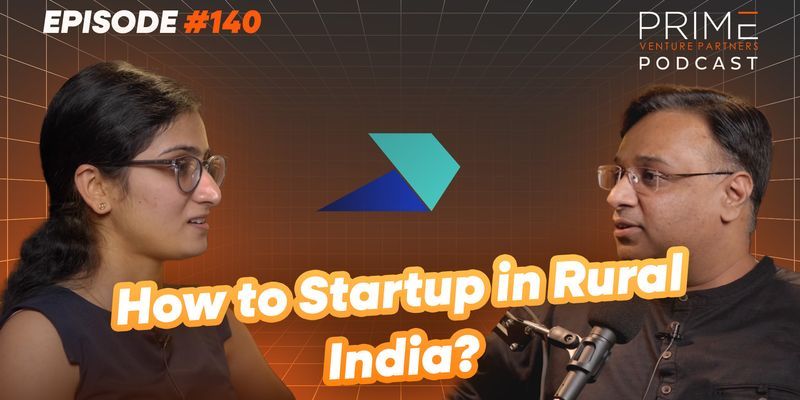The Blockchain divide: why large corporates are delinking it from the crypto world?
Amazon and IBM are championing Blockchain, but are desisting from crypto ledger-linked reward mechanisms. Doesn’t this defeat the very purpose of a decentralised approach to verifying transactions?
Blockchain is the way ahead, but true Blockchain is decentralised and intrinsically linked to a rewards mechanism. The idea was to create blocks of information in a transaction cycle and allow third parties – crypto miners - to verify any changes to the transaction or contract process, and offer a rewards mechanism.
But with Blockchain being linked to the speculation behind cryptocurrency, corporates are more than happy to delink the technology from cryptocurrency. By doing so, they are defeating the very purpose of a decentralised approach to verifying transactions and enforcing contracts with utmost transparency.
The death knell was sounded by AWS, the $28 billion public cloud giant. It launched a couple of Blockchain-based services at AWS Re:Invent 2018 based on a centralised smart contract system with AWS acting as the verifying layer but with no link to the crypto rewards mechanism.
Amazon-managed Blockchain is a fully managed service that makes it easy to create and manage scalable Blockchain networks using the popular open source frameworks Hyperledger Fabric and Ethereum (to be launched next year).
1552236605560.png?fm=png&auto=format)
Blockchain has split in to two streams of thought
Tough to manage?
According to AWS, Blockchain makes it possible to build applications where multiple parties can execute transactions without the need for a trusted, central authority. But the verifying mechanism will be AWS, not crypto miners. AWS has a reason for not going the decentralised route; it says building a scalable Blockchain network with existing technologies is complex to set up and hard to manage.
To create a Blockchain network, each network member needs to manually provision hardware, install software, create and manage certificates for access control, and configure networking components.
Once the Blockchain network is running, you need to continuously monitor the infrastructure and adapt to changes, such as an increase in transaction requests, or new members joining/leaving the network.
Amazon’s “Managed Blockchain” eliminates overheads required to create the network, and automatically scales to meet the demands of thousands of applications running millions of transactions.
“Once your network is up and running, managed Blockchain makes it easy to manage and maintain your Blockchain network,” says Andy Jassy, CEO of AWS. Amazon’s MB manages your certificates, lets you easily invite new members to join the network, and tracks operational metrics such as usage of compute, memory, and storage resources.
In addition, MB can replicate an immutable copy of the Blockchain network activity into Amazon Quantum Ledger Database (QLDB), a fully managed ledger database. “This allows you to easily analyse network activity outside the network and gain insights into trends,” he adds.
AWS is the centralised authority and has everything to do with its quantum ledger database, which is different from relational databases. Ledgers are typically used to record history of economic and financial activity in an organisation.
Also read: Andy Jassy, CEO of AWS on AI and Blockchain
With Amazon QLDB, an organisation’s data’s change history is immutable – it cannot be altered or deleted – and using cryptography, the organisation can easily verify that there has been no unintended modification to the application’s data.
QLDB uses an immutable transactional log, known as a journal, which tracks each application data change and maintains a complete and verifiable history of changes over time. It is also server-less, and so automatically scales to support the demands of an organisation’s application. There are no servers to manage; no read/write limits to configure. With QLDB, you only pay for what you use.
Let’s consider a retail transaction to simplify this process. Let’s say multiple parties, including a fisheries company, a tuna canner, a distribution and logistics company, and a retailer come together on a Blockchain system. Here the ERP of the retailer is connected to several applications in the chain, which include inventory and warehouse management systems. In the older system, the chain of information would pass from the retailer to the distributor to the factory independently.
But in a Blockchain world, they are all part of the same transaction.
So if the retailer plans a summer sale of tuna steaks in all its stores, it generates a request to its ecosystem of vendors. Everyone knows what stock of tuna the retailer requires and by what dates the fish should reach the store. Once there is an agreement on the contract of delivery, there is no way a third party could tamper with it. Each block is stored and verified on AWS. Any change in delivery and supply contracts cannot be made without the entire chain of businesses agreeing to alter agreements.
This is a decentralised mechanism, but will have AWS Central managing the Blockchain.
A similar system is used by IBM, which works with Walmart to track the global supply chain. Walmart works with IBM and uses the Hyperledger Fabric to track its produce, green leafy vegetables and lettuce, from farms, right from the growing stage, picking stage transportation stage to payment to different parties through delivery in stores. By doing so Walmart wants the fresh products available to consumers and is able to track staleness while transporting the produce.
Basically, Blockchain here ensures product information, right from farm to logistics to being delivered at stores, does not get tampered with - by various stakeholders in the chain - and ensures top quality produce is delivered to customers.
Food for thought
According to the WHO and Centers for Disease Control and Prevention, every year, one in 10 people fall ill - and 400,000 die - due to contaminated food. Many critical issues impacting food safety such as cross-contamination, the spread of foodborne illness, unnecessary waste, and the economic burden of recalls are magnified by lack of access to information and traceability. It can take weeks to identify the precise point of contamination, causing further illness, lost revenue, and wasted product.
For example, in 2017, it took more than two months to identify the farm source of contamination in an incidence of salmonella in papayas.
Blockchain is ideally suited to help address these challenges because it establishes a trusted environment for all transactions. In the case of the global food supply chain, all participants -growers, suppliers, processors, distributors, retailers, regulators, and consumers - can gain permissioned access to known and trusted information regarding the origin and state of food for their transactions.
This can enable food providers and other members of the ecosystem to use the Blockchain network to trace contaminated product to its source in a short amount of time to ensure safe removal from store shelves and stem the spread of illnesses.
Dole, Driscoll’s, Golden State Foods, Kroger, McCormick and Company, McLane Company, Nestlé, Tyson Foods, Unilever, Walmart, and others are now coming together with IBM to further champion Blockchain as an enabling technology for the food sector. Together, they will help identify and prioritise new areas where Blockchain can benefit food ecosystems and implement new IBM solutions. This work will draw on multiple IBM pilots and production networks in related areas that successfully demonstrate ways in which Blockchain can positively impact global food traceability.
“Unlike any technology before it, Blockchain is transforming the way like-minded organisations come together and enable a new level of trust, based on a single view of the truth,” says Marie Wieck, General Manager, IBM Blockchain.
He adds, “Our work with organisations across the food ecosystem and IBM’s new platform will unleash the vast potential of this exciting technology, making it faster for organisations of all sizes and in all industries to move from concept to production, and improve the way business gets done.”
1552236755617.png?fm=png&auto=format)
Both Amazon and IBM use the Hyperledger fabric. This is an open source collaborative effort created to advance cross-industry Blockchain technologies. It is a global collaboration, hosted by the Linux Foundation, and includes leaders in finance, banking, Internet of Things, supply chains, manufacturing, and technology.
Centralised vs decentralised
While corporates are going the centralised way - having their ecosystem on a Blockchain verified by a central key, purist Blockchain developers will tell you that it must be linked to a rewards mechanism to verify transactions and truly decentralise business information verification.
But this is where it gets tricky. Corporations will stay far away from issuing tokens linked to a particular crypto currency simply because the pricing of these crypto instruments is speculative. Nevertheless, it is a system that ensures the world has independent crypto miners to verify transactions. By using cryptography to verify a transaction, miners earn or are rewarded with crypto coins. This is what companies like Incrypt, KoineArth, and Enkidu want to propagate. They want organisations to embrace a decentralised way of verifying transactions linked to crypto rewards to the ecosystem.
The World Economic Forum believes 10 percent of global GDP will be stored on Blockchains by 2027. Gartner forecasts the business value-add of Blockchain will reach $176 billion by 2025, and continue to grow exponentially to exceed $3.1 trillion by 2030.
“We believe the essence of Blockchain is in the power of decentralisation and open access. This is because the true value of Blockchain is in its innovations that go beyond database technology, and can create consensus and trusted transactions between entities that do not know or trust each other. We believe the bulk of global investment and opportunity is in the arena of public Blockchain networks,” says Nitin Sharma, founder of Incrypt.
Decentralised applications on public Blockchains can solve multiple local problems such as eliminating middlemen, providing data security, formalising the economy, reducing corruption and tampering of financial ledgers, and improving the speed of service delivery by governments and corporations.
"That’s the big difference. In centralised Blockchain, where all parties in the transaction know each other, the system can somehow be manipulated. But, with crypto miners in play, the system is nearly impossible to manipulate because the parties in the transaction cannot collude with each other," says Srikar Varadraj, co-founder of Duniya Labs.
Say, for example there has been a contamination of fruits in the supply chain. The parties involved in a centralised system could turn a blind eye and choose not to report it. However, in a public Blockchain, this would be caught because it is tracking all metrics keeping the fruits fresh; any deviance would identified by a miner immediately.
This mean the contracts should be in the public domain, the application must have all parties on the Blockchain network, and information of the origin of the fruits and its logistics must be tracked as parameters within the Blockchain. However, industry sources say this form of verification requires a lot of compute power to manage the scale of transactions, and can sometimes be slow and cumbersome.
Clearly, Blockchain is the technology to enforce smart contracts. But the two streams of thought are now coming up against each other. For now, corporates have an edge over Blockchain and cryptocurrency enthusiasts. They are staying ahead simply because they are able to sell a simpler “ledger” concept to their business ecosystem. The purist world, meanwhile, does not want to decouple Blockchain and cryptocurrency.
The fall in Bitcoin prices has led the world into a tizzy, but once cryptocurrency is accepted by government regulations, the decentralised world may win. Or will it?






1552236605560.png?mode=crop&crop=faces&ar=2:1?width=3840&q=75)


![[Funding alert] Gurugram-based Bolo Indya raises $400,000 led by Inflection Point Ventures](https://images.yourstory.com/cs/2/0a385fc03e6011e999df3d1594bbde2c/Imagegtfr-1607249104762.jpg)

